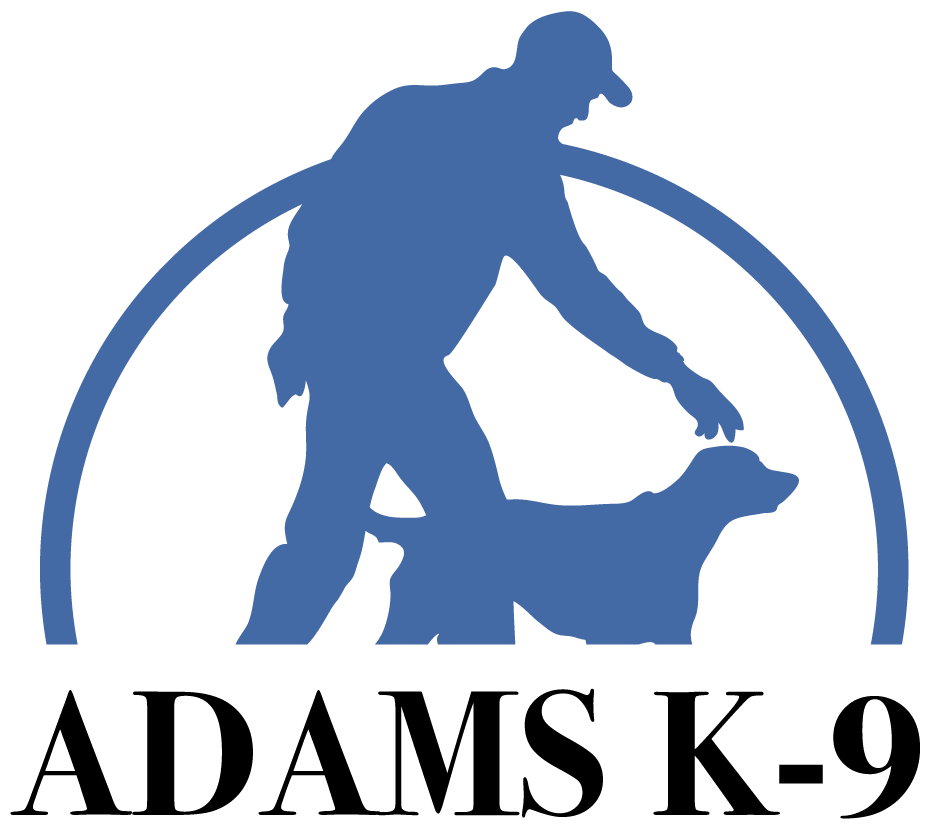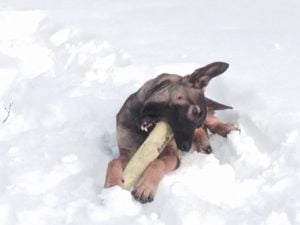We had two questions come up on our Facebook page regarding an issue that can be very frustrating for the owners; separation anxiety and puppy biting/jumping on small children.
The first question, “Can a dog develop separation anxiety at the age of two?”
The first question I would ask has there been a sudden change in the household causing stress? Stress can be caused by moving to a new home, terminal/serious illness in the family, divorce or death of another pet to name a few. Pregnancy can also cause your dog to become anxious or more protective. Dogs are pack animals and their natural instinct is to stick with the pack as family. When you leave it creates stress, causing your dog to develop unwanted behaviors for you to deal with; chewing/digging/barking. Some dogs handle stress better than others and the ones that don’t become destructive and cause problems while you are gone.
There is also something called Containment Phobia which people may confuse with separation anxiety. Containment phobia would be similar to what humans call claustrophobia. The two are similar but different. Claustrophobia is fear of enclosed or narrow space. Containment phobia is caused by the fear of being trapped and does not necessarily need to be a small space. Dogs that injure themselves trying to escape a crate may be suffering from containment phobia. If you can leave them loose in the home and yet they freak out about the crate, this may be containment phobia. However, if they chew up the casing or door to the home they may still have containment phobia. A dog that digs under or jumps a fence maybe suffering from containment phobia. Have you been to the zoo and seen lions pacing? Containment Phobia. To address this issue try installing a dog door so they can go in and out of the home. If your dog does have a dog door I also recommend including an invisible fence even if you already have a fenced in yard. The invisible fence will prevent digging under the fence to escape and also prevent jumping the fence.
So, does your dog have containment phobia or separation anxiety? Sometimes it’s difficult to diagnose, but if it started once the dog is 2 years old, I am thinking there is some sort of stress in the home that is making your dog anxious. A tired dog is a happy dog, so make sure your dog is getting enough exercise. As in humans, doctors recommend exercise to help deal with stress and it’s the same for dogs.
Is your dog nervous and clingy? Put more structure in your dog’s life through training. Teach the place command. Part of the place command means they stay put until released. If your dog is placing they cannot be following you to the bathroom, bedroom and fussing if you go to get the mail. Pet the dog less and have someone else feed him/her. In addition, the dog needs the stay off your lap and feet. When the dog is resting the rule should be no touching. The dog doesn’t need to touch you 24/7.
When you leave the home don’t make a big deal about it. No baby talk, petting, and telling the dog ‘I’m going to miss you”. Suck it up, it’s not your kid, ignore the dog and just leave. When you return home it’s the same gig. Stay calm ignore the dog until they calm. Act like you never left. Separation anxiety starts within the first few minutes of leaving. This will take time but leave, get in your car, drive away, and shut the garage door; do the same routine when you really leave the house and come right back. Do this routine with different ratios of time. Leave and come back after, 1 minute, 2, 3, 6, 2, 8, 5, 10, 3, 12, and so on until you can leave for 40 minutes and return. Separation anxiety is a tough one and takes time to help your dog work through it. This behavior modification takes times.
If your dog is food motivated, buy yourself a Kong toy, stuff it with teats and plain yogurt, freeze and give it to him/her when you leave.
Do the place command 15 minutes prior to your departure. My 7 month old Lab can stay on place for 40 minutes when I am in my office while doing paperwork. There are no excuses for not training your dog. You can do it, you just have to train.
Something else that may help separation anxiety is music or the television. Turn something on prior to leaving so your dog has something to listen to. There are calming tabs you can try. Calming tabs are herbal supplements that help calm the dog and there is also aromatherapy.
If you own a dog that stresses out when you leave you will need to work with the dog to try and remove the stress and re-program him/her.
The second question on our Facebook page – How do you keep puppies from jumping and biting the children in the home?
Keep your puppy on a leash and prevent this from happening. I do the same thing when raising a puppy with adult dogs. Puppies have no manners when it comes to socializing with dogs, so I keep my pup away from my adult dogs by keeping them on a leash. I gradually allow the pup to interact as they grow they learn.
Pups need to learn we do not put our mouths on people. I stop this by tugging the dog away with the leash as their mouth opens and they are thinking about it. You can use a spray bottle or a shaker can and direct them to something they are supposed to put their mouth on – a dog toy.
Children run and scream which excites the dog. You need to teach your children how to behave around dogs. If you want the dog be calm, your children need to learn to stay calm. Check out my blog post on children and dogs.
Teach your dog to sit and keep all four paws on the ground when petting. Teach the children to throw a dog toy to interact with the pup. Put a toy on a rope and let your child pull the toy around for the pup to chase. This keeps the attention on the toy and not your child.
If your pup jumps on a child, leash correct the dog and say “off”. Off means get your paws off me, her or the furniture. To teach your pup to stay off the furniture, use the leash give a tug and say “Off” when they are jumping or if they are already on the furniture. Off and direct the dog to the floor where they belong.
I hope this clarifies a couple of things and will help you through the ups and downs of raising a happy, well-balanced dog. Please email any questions to us and we will be happy to address them on our blog.


